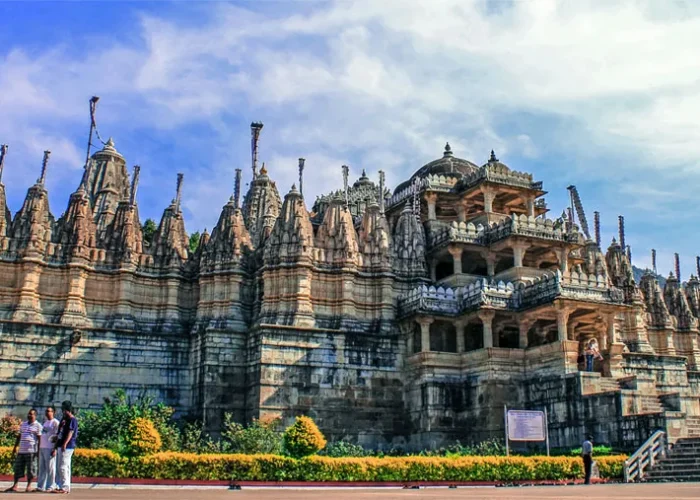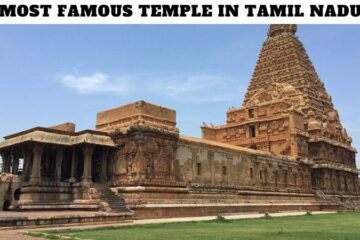
Jain Dilwara Temple Mount Abu Rajasthan: A Historical Journey
Welcome to the enchanting world of Jain Dilwara Temple, nestled in the serene hills of Mount Abu, Rajasthan. Dilwara Temple is a masterpiece of architectural brilliance and a symbol of religious devotion. With its intricate carvings, awe-inspiring sculptures, and tranquil ambiance, this temple has captivated the hearts of visitors for centuries.
The Origins of Jain Dilwara Temple
The roots of Jain Dilwara Temple can be traced back to the 11th and 13th centuries when the construction of these magnificent temples began. These architectural wonders were commissioned and built by the Chalukya dynasty and later expanded upon by the Solanki dynasty. The temples are dedicated to Jain Tirthankaras and are renowned for their exquisite craftsmanship.
The Architecture of Jain Dilwara Temple
Jain Dilwara Temple complex consists of five temples, each showcasing a distinct architectural style and craftsmanship. Let’s explore the architectural marvels within this sacred precinct:
Vimal Vasahi Temple: This temple is dedicated to the first Jain Tirthankara, Lord Rishabhdev. Constructed in the 11th century, it is the oldest and most prominent temple in the complex. The temple is known for its ornate pillars, intricately carved ceilings, and stunning sculptures.
Luna Vasahi Temple: Built in the 13th century, this temple is dedicated to the 22nd Jain Tirthankara, Lord Neminath. The highlight of the Luna Vasahi Temple is the marble statue of Lord Neminath, which is considered a marvel of artistry.
Pittalhar Temple: Dedicated to the first Jain Tirthankara, Lord Rishabhdev, the Pittalhar Temple stands out for its use of brass in the construction. The idol of Lord Rishabhdev is made entirely of brass and is a sight to behold.
Parshvanath Temple: Constructed in the 15th century, the Parshvanath Temple is dedicated to Lord Parshvanath, the 23rd Jain Tirthankara. It is renowned for its delicate carvings, particularly the lotus-shaped dome.
Mahavir Swami Temple: The youngest of the Dilwara temples, the Mahavir Swami Temple was built in the 16th century. It houses the idol of Lord Mahavir Swami and is adorned with beautiful marble carvings.

Significance of Mount Abu Dilwara Temple
Dilwara Temple of Rajasthan holds immense significance for the Jain community and is considered one of the holiest pilgrimage sites in Jainism. It serves as a place of worship, meditation, and spiritual enlightenment. The temples are revered for their religious sanctity and architectural grandeur, attracting devotees, history enthusiasts, and tourists from all around the world.
Dilwara Temple Mount Abu Rajasthan: Visitor Experience
Visiting the Jain Dilwara Temple is an experience that transcends the realms of time and space. Let’s delve into what awaits you when you step foot into this divine abode:
Spiritual Serenity and Tranquility:– As you enter the temple complex, you are greeted by a serene and peaceful ambiance. The air is filled with a sense of divinity, and the atmosphere encourages introspection and tranquility. The pristine white marble walls and ceilings, adorned with intricate carvings and delicate sculptures, create a visually captivating experience that evokes a deep sense of spirituality.
Marvel at the Architectural Marvels:– One cannot help but be awestruck by the architectural brilliance on display at Dilwara Temple. The attention to detail and the precision of the carvings are simply astounding. Every nook and corner of the temples is adorned with elaborate motifs, floral patterns, and mythological figures, showcasing the craftsmanship of the artisans who dedicated years of their lives to create these masterpieces.
The Exquisite Marble Craftsmanship:- One of the defining features of Dilwara Temple is the extensive use of marble in its construction. The marble used in the temples is of the highest quality, known for its purity and translucence. The artisans have skillfully transformed blocks of marble into delicate filigree work, intricate pillars, and finely carved ceilings. The play of light on the marble surfaces adds a mesmerizing dimension to the overall beauty of the temples.
Guided Tour and Insightful Narration:– To truly appreciate the historical and architectural significance of Dilwara Temple, it is highly recommended to avail of a guided tour. Knowledgeable guides provide insightful narrations, taking you on a journey through the history, legends, and symbolism associated with each temple. They unravel the stories behind the intricate carvings, allowing you to gain a deeper understanding of Jainism and the cultural heritage of the region.
Preservation of Heritage:– The Dilwara Temple Rajasthan complex stands as a testament to the dedication and efforts put forth by various organizations and the government to preserve and protect our cultural heritage. Strict measures are in place to ensure the conservation of these architectural marvels, including restrictions on photography, as the flash can harm the delicate marble surfaces. The commitment to safeguarding this invaluable heritage ensures that future generations can continue to marvel at its splendor.
Wrap up
Jain Dilwara Temple in Mount Abu, Rajasthan, is a treasure trove of architectural brilliance, religious significance, and spiritual serenity. Its intricate carvings, awe-inspiring sculptures, and tranquil ambiance make it a must-visit destination for history enthusiasts and seekers of spiritual enlightenment. The temples within the complex, dedicated to Jain Tirthankaras, showcase the rich cultural heritage and craftsmanship of ancient times.
Visiting Dilwara Temple Rajasthan offers a unique experience that combines admiration for architectural marvels, a sense of spirituality, and a deep connection to history. The intricate carvings, delicate sculptures, and the use of high-quality marble transport visitors to a bygone era, where devotion and artistry intertwined.
The preservation of Dilwara Temple’s heritage stands as a testament to the importance of safeguarding our cultural treasures. It is a collective responsibility to ensure that these architectural gems continue to inspire generations to come.
As you plan your visit to Jain Dilwara Temple, immerse yourself in the tranquility, marvel at the craftsmanship, and allow the spiritual energy to envelop you. Experience the grandeur of Dilwara Temple and witness the magnificence that has captivated the hearts of people for centuries.
FAQ's (Frequently Asked Questions)
1. What is the best time to visit Jain Dilwara Temple Mount Abu Rajasthan?
Ans. The best time to visit Dilwara Temple is during the months of October to March when the weather is pleasant and ideal for exploring the temple complex.
2. Are there any entry fees to visit Dilwara Mandir?
Ans. No, there are no entry fees to visit Dilwara Temple. It is open to all visitors, irrespective of their religious beliefs.
3. Are there any specific dress codes to be followed while visiting the temple?
Ans. Yes, visitors are required to dress modestly and cover their shoulders and knees. It is recommended to remove footwear before entering the temples as a sign of respect.
4. Can photography be done inside Dilwara Temple?
Ans. Photography is strictly prohibited inside the temple complex to protect the delicate marble surfaces. Visitors are not allowed to take photographs.
5. Are there any accommodation options available near Temple?
Ans. Yes, there are several accommodation options available near Dilwara Temple, ranging from budget guesthouses to luxurious hotels. Mount Abu, the hill station where the temple is located, offers a variety of choices for all budgets.
6. Can non-Jain visitors enter the main sanctum of the temple?
Ans. No, the main sanctum of the Jain Dilwara Temple is accessible only to Jain devotees. Non-Jain visitors can explore the rest of the temple complex and admire its architectural beauty


